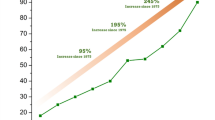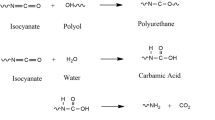Abstract
Water is the most abundant compound inherently existing in bio-oils. Thus understanding the role of water within bio-oils upgrading process is essential for future engineering scale-up design. In this study, furfural was chosen as bio-oils model compound, and the catalytic hydrogenation of furfural over commercial 5%, Ru/C catalyst was firstly investigated in a series of gradient variable water/ethanol mixture solvents. Water had a significant effect on the distribution of product yields. The dominant reaction pathways varied with the water contents in the water/ethanol mixture solvents. Typically, when ethanol was used as the solvent, the main products were obtained by the hydrogenation of carbonyl group or furan ring. When pure water was used as the solvent, the rearrangement reaction of furfural to cyclopentanone should be selectively promoted theoretically. However, serious polymerization and resinification were observed herein in catalytic hydrogenation system of pure water. The catalyst surface was modified by the water-insoluble polymers, and consequently, a relative low yield of cyclopentanone was obtained. A plausible multiple competitive reaction mechanism between polymerization reaction and the hydrogenation of furfural was suggested in this study. Characterizations(TG,FT-IR,SEM)were employed to analyze and explain our experiments.
Similar content being viewed by others
References
Zhang S, Yan Y, Li T et al. Upgrading of liquid fuel from the pyrolysis of biomass [J]. Bioresource Technology, 2005, 96: 545–550.
Asadieraghi M, Ashri Wan Daud W M, Abbas H F. Heterogeneous catalysts for advanced bio-fuel production through catalytic biomass pyrolysis vapor upgrading: A review [J]. RSC Adv, 2015, 5: 22234–22255.
Corma A, Iborra S, Velty A. Chemical routes for the transformation of biomass into chemicals [J]. Chemical Reviews, 2007, 107: 2411–2502.
Chen Y, Wu Y, Hua D et al. Thermochemical conversion of low-lipid microalgae for the production of liquid fuels: Challenges and opportunities [J]. RSC Adv, 2015, 5: 18673–18701.
Oasmaa A, Elliott D C, Korhonen J. Acidity of biomass fast pyrolysis bio-oils [J]. Energy & Fuels, 2010, 24(12): 6548–6554.
Phan B M Q, Duong L T, Nguyen V D et al. Evaluation of the production potential of bio-oil from Vietnamese biomass resources by fast pyrolysis [J]. Biomass and Bioenergy, 2014, 62: 74–81.
Bridgwater A V. Principles and practice of biomass fast pyrolysis processes for liquids [J]. Journal of Analytical and Applied Pyrolysis, 1999, 51: 3–22.
Lu Q, Li W Z, Zhu X F. Overview of fuel properties of biomass fast pyrolysis oils [J]. Energy Conversion and Management, 2009, 50(5): 1376–1383.
Oasmaa A, Kuoppala E, Solantausta Y. Fast pyrolysis of forestry residue. 2. Physicochemical composition of product liquid [J]. Energy & Fuels, 2003, 17: 433–443.
Oasmaa A, Solantausta Y, Arpiainen V et al. Fast pyrolysis bio-oils from wood and agricultural residues [J]. Energy & Fuels, 2010, 24(2): 1380–1388.
Chen D, Zhou J, Zhang Q et al. Evaluation methods and research progresses in bio-oil storage stability [J]. Renewable and Sustainable Energy Reviews, 2014, 40: 69–79.
Li H, Xia S Q, Li Y et al. Stability evaluation of fast pyrolysis oil from rice straw [J]. Chemical Engineering Science, 2015, 135: 258–265.
Nimmanwudipong T, Runnebaum R C, Block D E et al. Catalytic reactions of guaiacol: Reaction network and evidence of oxygen removal in reactions with hydrogen [J]. Catalysis Letters, 2011, 141(6): 779–783.
Lee C R, Yoon J S. Suh Y W et al. Catalytic roles of metals and supports on hydrodeoxygenation of lignin monomer guaiacol [J]. Catalysis Communications, 2012, 17: 54–58.
Oh S, Hwang H, Choi H S et al. The effects of noble metal catalysts on the bio-oil quality during the hydrodeoxygenative upgrading process [J]. Fuel, 2015, 153: 535–543.
Elkasabi Y, Mullen C A, Pighinelli A L et al. Hydrodeoxygenation of fast-pyrolysis bio-oils from various feedstocks using carbon-supported catalysts [J]. Fuel Processing Technology, 2014, 123: 11–18.
Tanneru S K, Steele P H. Pretreating bio-oil to increase yield and reduce char during hydrodeoxygenation to produce hydrocarbons [J]. Fuel, 2014, 133: 326–331.
Xiu S, Shahbazi A. Bio-oil production and upgrading research: A review [J]. Renewable and Sustainable Energy Reviews, 2012, 16: 4406–4414.
Wildschut J, Melián-Cabrera I, Heeres H J. Catalyst studies on the hydrotreatment of fast pyrolysis oil [J]. Applied Catalysis B: Environmental, 2010, 99(1/2): 298–306.
Capunitan J A, Capareda S C. Hydrotreatment of corn stover bio-oil using noble metal catalysts [J]. Fuel Processing Technology, 2014, 125: 190–199.
Rajadhyaicsha R A, Karwa S L. Solvent effects in catalytic hydrogenation [J]. Chemical Engineering Science, 1986, 41: 1765–1770.
Stolle A, SchmÖGer C, Ondruschka B et al. Liquid phase hydrogenation of benzalacetophenone: Effect of solvent, catalyst support, catalytic metal and reaction conditions [J]. Chinese Journal of Catalysis, 2011, 32(8): 1312–1322.
Elliott D C, Hart T R. Catalytic hydroprocessing of chemical models for bio-oil [J]. Energy & Fuels, 2009, 23: 631–637.
Yang Y, Du Z, Huang Y et al. Conversion of furfural into cyclopentanone over Ni-Cu bimetallic catalysts [J]. Green Chemistry, 2013, 15(7): 1932–1940.
Hronec M, Fulajtarova K. Selective transformation of furfural to cyclopentanone [J]. Catalysis Communications, 2012, 24: 100–104.
Hronec M, Fulajtarova K, Micušik M. Influence of furanic polymers on selectivity of furfural rearrangement to cyclopentanone [J]. Applied Catalysis A: General, 2013, 468: 426–431.
Hronec M, Fulajtarová K, Liptaj T. Effect of catalyst and solvent on the furan ring rearrangement to cyclopentanone [J]. Applied Catalysis A: General, 2012, 437: 104–111.
Panagiotopoulou P, Vlachos D G. Liquid phase catalytic transfer hydrogenation of furfural over a Ru/C catalyst [J]. Applied Catalysis A: General, 2014, 480: 17–24.
Wang C, Guo Z, Yang Y et al. Hydrogenation of furfural as model reaction of bio-oil stabilization under mild conditions using multiwalled carbon nanotube(MWNT)-supported Pt catalysts [J]. Industrial & Engineering Chemistry Research, 2014, 53(28): 11284–11291.
Hoydonckx H E, Van Rhijn W M, Van Rhijn W et al. Furfural and Derivatives [M]. Ullmann's Encyclopedia of Industrial Chemistry, Weinheim, Germany, 2007.
Hu X, Wang Y, Mourant D et al. Polymerization on heating up of bio-oil: A model compound study [J]. AIChE Journal, 2013, 59(3): 888–900.
Vaidya P D, Mahajani V V. Kinetics of liquid-phase hydrogenation of furfuraldehyde to furfuryl alcohol over a Pt/C catalyst [J]. Industrial & Engineering Chemistry Research, 2003, 42: 3881–3885.
Chen B, Li F, Huang Z et al. Integrated catalytic process to directly convert furfural to levulinate ester with high selectivity [J]. Chem Sus Chem, 2014, 7(1): 202–209.
Hu X, Westerhof R J M, Wu L et al. Upgrading biomassderived furans via acid-catalysis/hydrogenation: The remarkable difference between water and methanol as the solvent[J]. Green Chem, 2015, 17(1): 219–224.
Author information
Authors and Affiliations
Corresponding author
Additional information
Supported by the National Basic Research Program of China (“973” Program, 2014CB260408) and Tianjin Natural Science Foundation (No. 13JCYBJC19300).
Rights and permissions
About this article
Cite this article
Xia, S., Li, Y., Shang, Q. et al. Liquid-phase catalytic hydrogenation of furfural in variable solvent media. Trans. Tianjin Univ. 22, 202–210 (2016). https://doi.org/10.1007/s12209-016-2804-x
Accepted:
Published:
Issue Date:
DOI: https://doi.org/10.1007/s12209-016-2804-x




